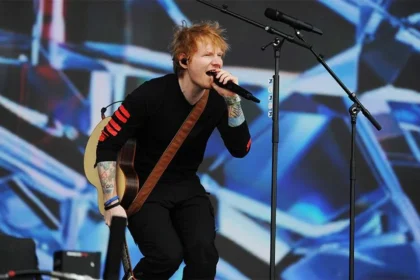The enigmatic realm of ghosts and paranormal occurrences has captivated the human imagination for centuries, fueling countless stories and legends. However, two distinguished researchers from London’s Goldsmiths University’s Anomalistic Psychology Research Unit are now shining a spotlight on this shadowy subject, presenting a compelling array of five scientific explanations that challenge the existence of ghosts.
With a blend of empirical research and psychological insights, these experts delve deep into the underlying mechanisms that give rise to ghostly experiences, offering rational explanations that unravel the mysteries behind perceived supernatural encounters.
- Sleep Paralysis: Unveiling the Veil of Fear Dr. Chris French, a prominent figure in the realm of anomalous psychology, casts light on a phenomenon that has been the bedrock of many ghost stories—sleep paralysis. During the rapid eye movement (REM) phase of sleep, the body’s temporary immobilization can foster a sensation of wakefulness yet immobility. This state often leads to vivid hallucinations, which may involve the eerie perception of a spectral presence. Dr. French likens this to a glitch in the otherwise seamless machinery of sleep.
- Mind Over Apparition: The Role of Belief and Context The psychological landscape of belief plays a pivotal role in shaping ghostly encounters. Dr. French underscores the power of prior beliefs, contextual cues, and even hallucinations in influencing how individuals perceive ghosts. The interplay of context with preconceived notions can significantly color one’s interpretation of their surroundings, creating an environment ripe for haunting experiences.
- Electromagnetic Fields: Sparks of Illusion The subtle influence of electromagnetic fields on the human brain is a nuanced aspect that can impact perceptions. Dr. French delves into how these fields, originating from both natural sources and human-made technologies, can disrupt neural activity and trigger perceptual distortions. While some individuals report unusual sensations under such exposure, the research shows a connection to suggestibility rather than supernatural forces.
- Unheard Echoes: Invisible Sounds and Optical Illusions The audible spectrum extends beyond what the human ear can perceive, encompassing infrasound and ultrasonic sound. Astonishingly, lower frequencies—around 19 hertz—can induce minute vibrations in the human eye, generating optical illusions. Dr. French’s research investigates the interplay of electromagnetic fields and concealed sounds in shaping beliefs about ghosts. Ultimately, it highlights the powerful role of suggestion in shaping uncanny experiences.
- The Moldy Connection: Mould as a Catalyst for Haunting Tales In an unexpected twist, a commonplace element takes a seat at the table of ghostly phenomena—mold. Dr. Shane Rogers, a civil and environmental engineering expert, presents intriguing correlations between haunted locations and the prevalence of mold. A link between eerie behavior and mold exposure emerged, leading to a newfound understanding of how certain mold types, such as Aspergillus, can trigger breathlessness and conjure visions of shadowy shapes due to inflammation of the optic nerve.
As these scientific revelations unfold, a new perspective emerges—one that delves into the psychological and physiological factors that underpin perceptions of the paranormal. By peeling back the layers of mystery, the allure of ghostly encounters is reexamined through a scientific lens. The research underscores the intricate interplay between human perception, belief, and the unseen forces that shape our understanding of the supernatural.




